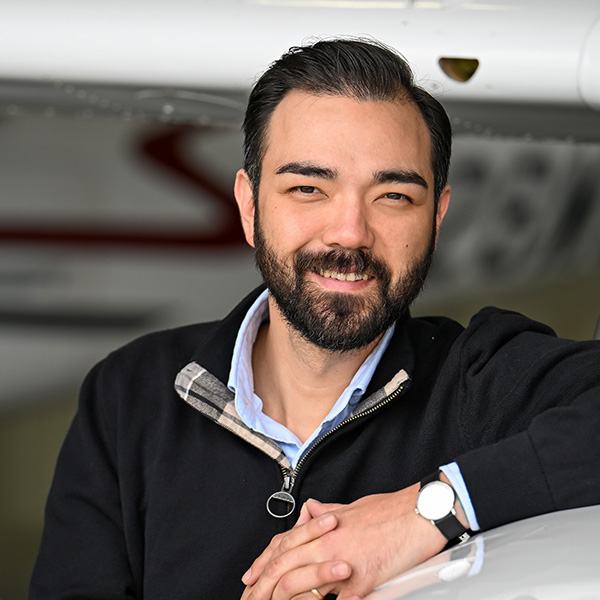Daedalean PilotEye
The future of AI-powered traffic detection

But the camera attached to your cowling has been working overtime, scanning what’s ahead with more accuracy and efficiency than you ever could. It detects a glider—one without ADS-B Out or FLARM (flight alarm collision avoidance)—silently descending through your projected flight path, and it does so early enough to give you time to process what’s happening and turn, perhaps before the glider pilot even sees you. It’s a nonevent. No close calls, no risky evasive maneuvers, and plenty of time for methodical analysis and action. That’s the promise of Daedalean’s AI-enhanced visual traffic detection system, PilotEye.
Daedalean, based in Zurich, Switzerland, is developing a suite of AI-enhanced tools under the product line Ailumina. PilotEye is the first of their products undergoing concurrent certification by the FAA and the European Aviation Safety Agency (EASA). Designed for fixed-wing aircraft, PilotEye works as a redundancy to existing traffic-avoidance systems by scanning for things like birds, gliders, and parachutes and alerting pilots to potential hazards. PilotEye is branded separately from Daedalean’s other tools because it originated as a jointly developed product with U.S.-based avionics manufacturer Avidyne. Daedalean expanded into the U.S. market by opening an office in Phoenix, Arizona,
in 2022, and the company is working to certify a version of the technology for rotary-wing aircraft called Ailumina Vista.
“Daedalean’s visual traffic detection system will probably be the world’s first safety-critical product for civil aviation based on machine learning,” says Daedalean CEO Bas Gouverneur. That’s not hyperbole; as of this writing, no safety-critical AI technology has been certified for use in civil aviation. This is new territory for regulators. “Before our STC project, no practical test of the new concepts had begun,” said Gouverneur. “That’s why our certification process has such an unusual character, with the two regulators, FAA and EASA, concurrently watching each other’s progress. They want to ensure from the beginning that they are aligned.”
Certification is a yearslong process, but the technology has passed two of four stages of involvement (SOI) audits, with the third commencing summer of 2025. The process ensures the software complies with rigorous safety standards. But given the novel nature of incorporating AI with standard technology and components, there are a few extra hoops to jump through.

“AI software is not created as classical program code—there are no lines of code that can be checked to meet requirements and be debugged,” says Gouverneur. “AI is tuned through adjusting millions of parameters during the learning process—too many parameters for a human to control and trace how they impact the resulting output of a system.” Because there is no traditional code that can be reviewed, regulators are essentially mapping out an entirely new approach to assure the safety and reliability of Daedalean’s AI-based applications.
The software collects data during flights conducted over different regions to teach their AI what it should be looking for. Algorithms process the video captured on these flights to develop “semantic understanding,” or the AI’s ability to interpret meaning and context from datasets by piecing together patterns. This allows the system to accurately distinguish a parachute from, say, a cloud. The system’s ability to make connections from these patterns is improved as more data is collected and analyzed.


For those who may be concerned about flying with unpredictable AI that evolves or learns in real time, put your minds at ease. The system is, according to FAA classification, “machined-learned” as opposed to “machine-learning.” “Training is done in Daedalean’s labs, and the system’s neural networks are fixed,” says Gouverneur. “It doesn’t evolve or learn during operation. It behaves deterministically: Given the same input, it will always produce the same output.” That is, the system is always predictable. Software updates are tested and validated before being installed during ground maintenance.
As presented, the tool offers GA pilots considerable utility. Take wires for example, obstacles that are notoriously difficult to detect during flight. Gouverneur says their neural network can reliably analyze wires even when they are only a few pixels wide and nearly invisible to the pilot.

Gouverneur said the capabilities of Daedalean products position the company to reach across multiple industries, and the company anticipates being tapped by other developers for its expertise and guidance on how to navigate the certification process for systems enhanced by AI. “And since the framework that we elaborated with EASA is universal, it applies to any machine learning process,” says Gouverneur.”
It was announced in August 2025 that Daedalean will be acquired by Destinus, who plans to integrate the technology into their unmanned flight systems, serving both the civil and defense markets. Based in the Netherlands, Destinus has grown to become one of Europe’s largest manufacturers of unmanned aerial vehicles. 



